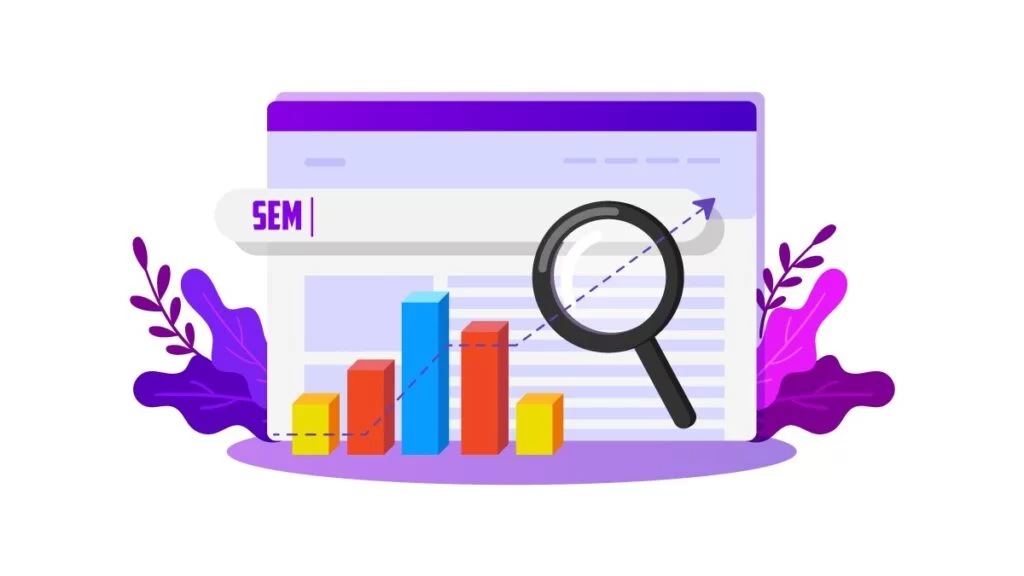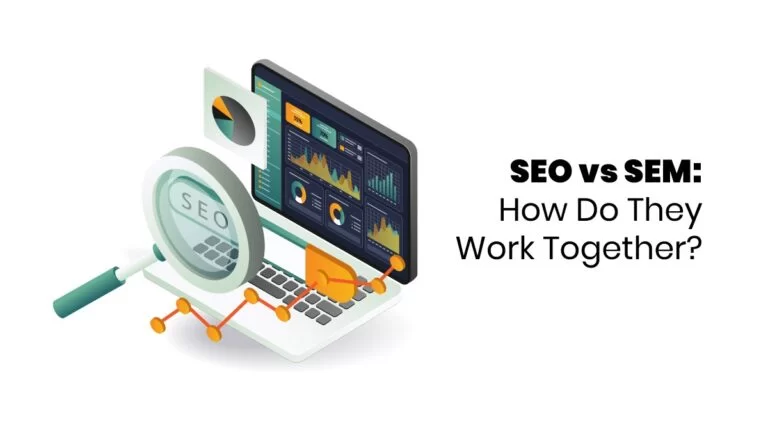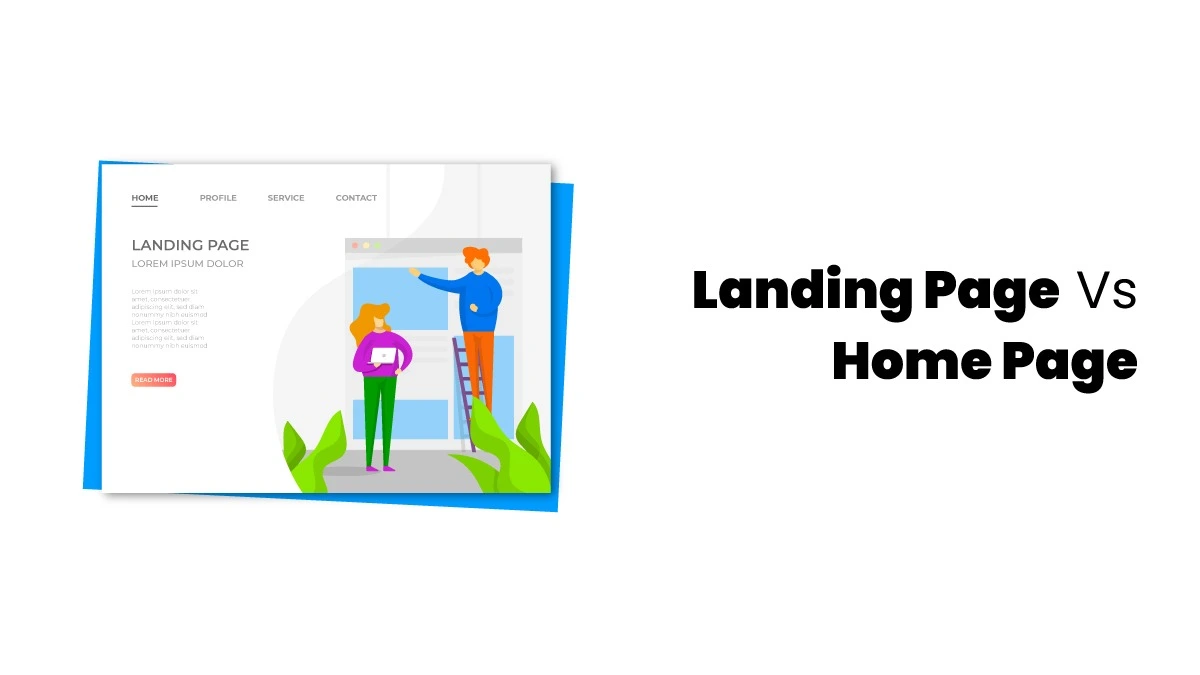Introduction
If you’re diving into digital marketing, one of the first things you’ll hear about is the difference between SEO and SEM. These two strategies are often discussed together, but they play very different roles when it comes to building your online presence. When looking at SEO vs SEM, it’s not really about choosing one over the other—it’s about understanding how they can work together. SEO helps you grow organically over time, while SEM brings faster results through paid ads. Knowing the difference between SEO and SEM helps you make smarter marketing decisions, balance your strategy, and get the most out of both short-term gains and long-term growth.
Understanding SEO & SEM
The SEO Blueprint
SEO is how you get noticed online without spending money on advertisements. It entails making your website easy to find and beneficial for search engine users. This article explains how to choose good keywords, write well, and deal with any technical issues. If done correctly, SEO can help your website rank higher and attract more people.
The Three Pillars of SEO
SEO works best when you think of it as three things that fit together: what you do on your site, what others do, and the technical matters.
On-page SEO means making your actual website good—your words, titles, what people look for, and how you set things up. You want search engines and people to understand it.
Off-page SEO is all the things that happen away from your site, like when other good sites link to you. Those links are like thumbs up, so your site looks better to search engines and more people see it.
Technical SEO is the things you don’t see—like making your site load fast, work on phones, and be easy for search engines to use.
If you get these three things right, your site should do well in search for a long time.
Inside The SEM Model
Search Engine Marketing, or SEM, is a great way to get your website noticed fast with paid ads. Unlike SEO, which takes a while to get going, SEM lets you show up at the very top of search results by bidding on keywords. It’s more than just throwing up ads, though. It involves making smart campaigns that target people who want what you have. With things like Google Ads, you get to decide how much you spend, who you’re trying to reach, and how well your ads are doing as it happens. SEM is a really flexible and helpful way to market online.
Types of SEM
Search Engine Marketing involves more than just the usual ads you see on search engines. There are different kinds of ads, and each one has its own thing. Paid search ads are common – they make your website pop up at the top of search results when someone searches for a specific word. Then there are display ads, you know, those picture ads you see on different sites that help people get to know your brand.
Shopping Ads can also helps several shops do better.They show a picture, price, and a link to buy it which is easy for people to access. Remarketing is also a smart move which lets you remind those people who have visited earlier to revisit again.
When you implement all these things together, you will get genuine buyers who is in need of things you sell.
Purpose of Each Strategy
SEO and SEM both work to get more people to your site, but they do it differently. SEO is all about making your site look good to search engines over time by improving your content and how your site is set up.SEM uses paid ads to get you seen fast in search results. SEO takes longer, but it pays off later. SEM’s good for a quick win or targeting specific customers.
Picking Your Ideal Strategy
Picking the right plan depends on what you want to achieve and how much money you have to spend. If you’re thinking long-term and want to gradually build up your online presence, then SEO is a solid option. Keep in mind that SEO takes time before you start seeing real changes. If you want to be seen as soon as possible, SEM can get you seen more quickly with ads you pay for. Most companies find that doing both yields better results, which means SEO for steady growth and SEM when you need a boost.
When to Use Each Strategy?
Go for SEO when:
You want traffic that sticks around: SEO is great if you’re after visitors that keep coming back. Keep tweaking your stuff and your site, and you’ll slowly move up in search results. Then you get free traffic without having to pay for ads all the time.
Money’s tight, but you’ve got time: SEO doesn’t usually cost a lot at the start, but it takes time and work. If you can make new content all the time and fix things on your site, SEO is a cheap way to be more visible online.
You’re trying to become a trusted brand, bit by bit: Search engines like sites that are reliable, helpful, and organized. If you use SEO, you build trust slowly, which helps search engines and people see you as a go-to source for what you do.
Use SEM for the following purposes:
Need to get noticed fast or have something fresh to share? If you’re releasing a product or service, search engine marketing will help you get to the top of search results right away. This quick visibility is good for getting people to know you and bringing in traffic.
Got limited-time deals? For offers that don’t last long, search engine marketing is the better choice. You can do ads that start and stop as needed, so you don’t miss clicks.
Want to target a group or area? Search Engine Marketing lets you control who sees your ads. If you want to reach people in a city, age range, or with certain interests, paid ads let you change your reach and messages.
Creating a Unified Game Plan
Instead of picking either SEO or SEM, why not use both? SEO is great for setting up a solid base by making your site more visible without paying in the long run. SEM can give your business a quick jump start when you need it. When you use them together, they work well with each other. SEO gives you growth that lasts, and SEM gets you fast results when you need them. If you plan them together, you’re always visible, whether people search now or later. It’s really about balancing things out and getting the best of both.

How SEO and SEM Work Together?
SEO and SEM: Think of them as two ways to get noticed online. SEO is like slowly building a solid reputation by creating cool stuff, using the right words, and making your website easy to use. Search engines will learn to trust you with time. SEM, on the other hand, is like using ads to jump to the front of the line and get in front of the people you want to reach. When you use them together, you’re hitting all angles. You can be seen right away and build a name that lasts. It’s a clever combo that keeps your brand visible now as you gain respect later.
When you combine SEO and SEM, you get some cool strategic advantages that make your online presence way stronger. Here’s how it helps you out:
Shared Keyword Strategy
When SEO and SEM teams agree on which keywords to chase, they can target them better together. Keywords are doing great in paid ads, showing what people click on and buy. This info can improve SEO content. Also, good organic keywords can lower ad costs because they show where you’re already known without paying.
This teamwork makes sure you don’t fight yourself or waste money on bad keywords. Instead, focus on words that give the most value in both areas. When you share keywords, your brand looks stronger since it appears in organic searches and ads. Combining efforts makes each one stronger.
Cross-Channel Data Insights
When you put SEO and SEM together, you get way more info about what users do, what they want when searching, and what makes them buy. Say your ads get tons of clicks, but no one’s buying. You can tweak your regular website content to give people the info they need to make that purchase. Also, if people leave your website super fast, that info can help you adjust your ad landing pages to keep folks around.
If you keep an eye on how both SEO and SEM do, it is simpler to see what’s doing great and where people bail. Then you can fix your keywords, the way you write content, when you post, and who you’re targeting. Basically, SEO and SEM work together to make your whole online marketing plan way more flexible and smart.
Double SERP Presence
Getting both a regular listing and a paid ad on the same search page really helps you get noticed and look legit. If people spot your brand a couple of times on the same page—mainly at the top—they’re way more likely to click and trust you. Being all over the search results boosts how people know your brand and means they probably won’t click on your rivals.
Also, it’s useful when your regular listing is doing well. A paid ad can grab that top spot and push your message even harder. Having your name in two places doesn’t just get you seen twice as much—it makes people think you’re a big deal and worth trusting. Usually, folks figure if you’re showing up in both spots, you must be a leader in what you do.
Funnel Coverage
SEO is great for when people are just becoming aware of something or doing research, because it gives them useful info and answers. But SEM really works best when people are about to buy—it gets to them with ads that tell them exactly what to do. If you do both, you reach customers at all points, from when they first search for something to when they actually buy it.
With this good, complete plan, you make sure you don’t miss anyone who might want to buy. SEO teaches people stuff while SEM gets the people who are seriously thinking of buying. They work together to lead people to buy stuff without being too pushy, and they keep the message consistent the whole way.
Smarter Budget Allocation
When you mix SEO and SEM, you can be smarter about money. Say your SEO is doing great for some expensive keywords. You could then spend less on ads for those keywords and use that money where you’re not getting much organic traffic. This gives you wiggle room and makes sure you’re getting the most from your money.
Also, SEM gives you quick results and shows you if you’re getting a return on your investment, which can help your SEO efforts since those take longer to pay off. As your organic rankings get better, you might not need as many paid ads. It’s about finding the right balance between getting wins now and wins later.
Conclusion
Grasping the difference between SEO and SEM is crucial for anyone aiming to thrive in today’s digital space. While SEO builds long-term visibility, SEM offers immediate results, making them a powerful combo when used together. Whether you’re comparing SEO vs SEM for your next strategy or just starting out, investing in the right knowledge makes all the difference. Enrolling in an SMM course, upgrading your skills through SEO training, or choosing the best digital marketing training online can give you the tools to make smarter marketing moves and stand out in a competitive market.










